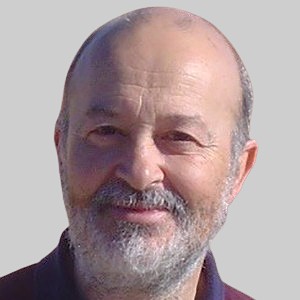Prof. Fernando Martin García
Fernando Martín graduated in Chemistry, specialty Quantum Chemistry, in 1984 and Physics, specialty Theoretical Physics, in 1986 at the Universidad Autónoma de Madrid. He received his PhD degree at the same university in 1986. Then, he completed postdoctoral studies at the University of Bordeaux I (1988), the Université de Paris VI (1989-1990) and the University of Chicago (1995-1996).
He has been Associate Professor from 1993 to 2005 and since then Full Professor at the Universidad Autónoma de Madrid. He is member of IMDEA Nanociencia since 2010. He has published more than 430 articles, among them several in the journals Science (4) Nature (2), Chemical Reviews (1), Nature Chemistry (2), Nature Physics (2), Nature Photonics (1), Nature Communications (4), Proceedings of the National Academy of Science (3), Physical Review Letters (31), Angewandte Chemie (2), Journal of the American Chemical Society (3), ACS Nano (1), Advanced Materials (1), Small (1), and Nano Letters (1) as well as several reviews and book chapters.
In 2000, he was awarded the National Research Prize Rey Juan Carlos I. In 2010, the prize of the Spanish Royal Society of Chemistry in Chemical Physics and in 2011, the Advanced Grant from the European Research Council XCHEM. He was awarded with the King Jaime I Prize on Basis Research in 2017.
He has been PrincipaI Investigator of more than 20 grants.
He has chaired several European networks and has been the Spanish representative in the Atomic, Molecular and Optical Physics Division of the European Physical Society. He has supervised 16 doctoral and 14 master theses, and is currently Chair of the “Cátedra UAM-Fujitsu” on Scientific Computing and Big Data.
Research Lines
-
Our work consists in the theoretical study of the dynamics in isolated quantum systems, from the smallest ones, such as in the interaction of atoms or small molecules with ultrashort laser pulses, to medium-sized systems, such as fullerenes and biomolecules, or extended systems, as in the interaction of molecules with metallic surfaces.
-
Our aim is to produce theoretical predictions and interpretations that can lead to a better understanding of these systems, as well as to propose new experimental situations. For that we use state-of-the-art theoretical tools, both home-made and standard: from full-dimensional grid calculations for the hydrogen molecular ion to density functional theory for large molecules on metallic surfaces. In particular our work focuses on (i) the modeling of photoexcitation and photoionization processes in atomic and molecular systems induced by synchrotron radiation and ultrashort laser pulses with femto- and attosecond dura- tion, and (ii) the study of materials and nano-objects composed of molecular systems, aggregates and fullerenes, isolated or deposited on metallic and nonmetallic surfaces.
Relevant publications
- "Attosecond coupled electron and nuclear dynamics in dissociative ionization of H 2", L. Cattaneo, J. Vos, RY. Bello, A. Palacios, S. Heuser, L. Pedrelli, M. Lucchini, C. Cirelli, F. Martín, U. Keller. Nature Physics 14, pages 733–738 (2018)
- "Reconstruction and control of a time-dependent two-electron wave packet", C.Ott, A.Kaldun, L.Argenti, P.Raith, K.Meyer, M.Laux, Y. Zhang, A. Blättermann, S. Hagstotz, T. Ding, R.Heck, J.Madroñero, F. Martín and T. Pfeifer. Nature 516, pages 374–378 (2014)
- “Electron localization following attosecond molecular photoionization” G. Sansone, et col. Nature 465, pages 763- 766 (2010)
- “Single photon induced symmetry breaking of H2 dissociation” F. Martín et col. Science 315, pages 629-630 (2007)
- “Complete photo-induced breakup of the H2 molecule as a probe of molecular electron correlation” W. Vanroose, et col. Science 310, pages 1787-1789 (2005)






